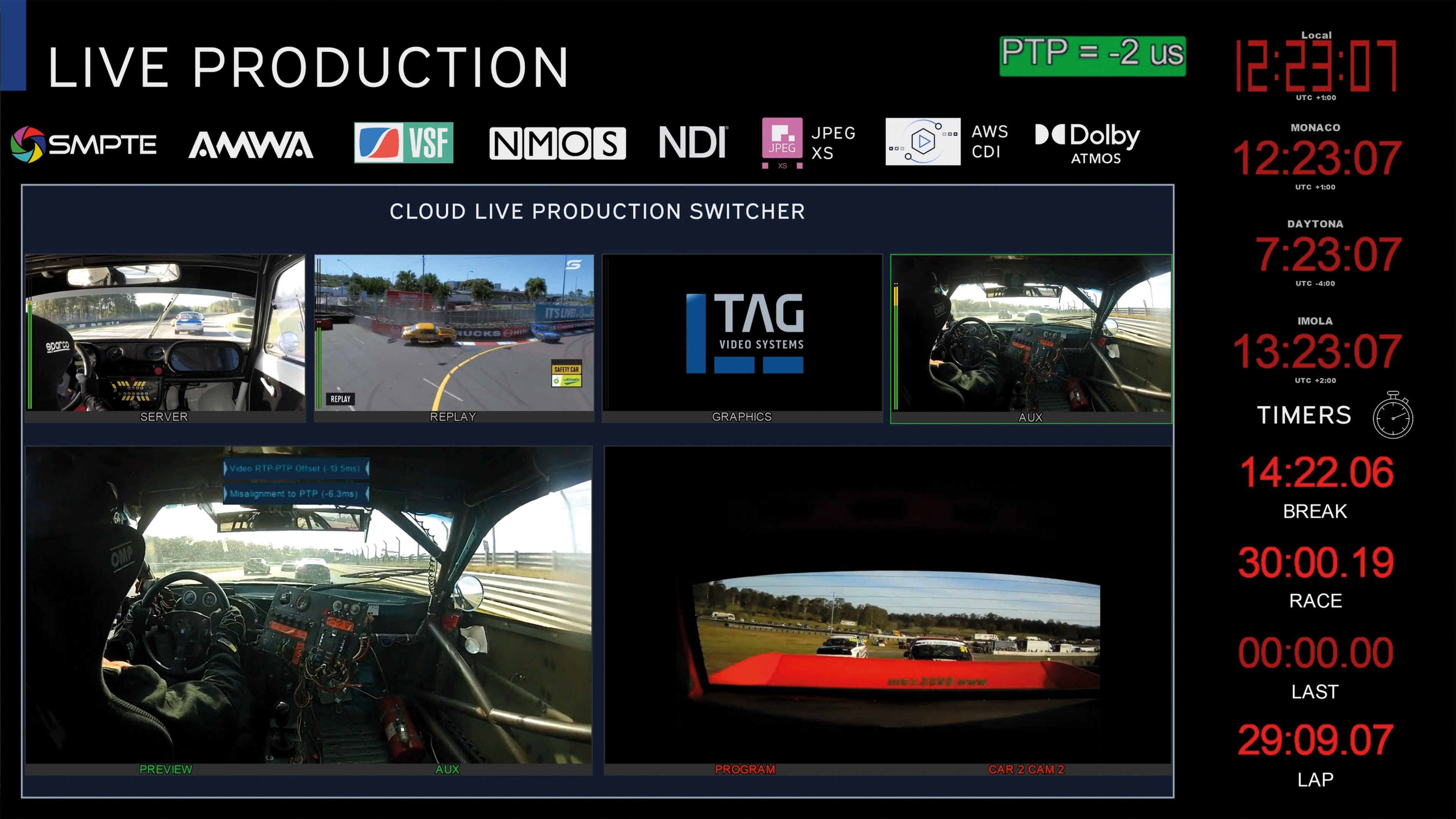TAG Upgrades Its Monitoring Visualization Platform
The new improvements are designed to cut through complexity, reduce bandwidth and improve live productions

TEL AVIV—TAG Video Systems has released a series of upgrades, enhancements and added support to its Realtime Media Monitoring Platform that are designed to improve the monitoring of live productions.
The suite of live production tools has been incorporated into the recent version of the Company's MCM (Multichannel Monitoring System) and addresses all aspects of live production including cloud, hybrid and remote operation.
The platform was recently selected by FOX Sports as its monitoring and visualization provider at the world’s greatest sporting event in Qatar.
“TAG is committed to providing our customers with the tools they need to stay successful in the highly competitive live production space,” stated Paul Briscoe, chief architect for TAG Video Systems. “Most of the improvements and enhancements to our platform are the result of close contact with our customers and our ability to provide them with what they need to cut through the complexity of these complicated workflows and keep them ahead of the curve when dealing with emerging formats and technologies. TAG’s platform offers the perfect solution for ensuring the integrity of a live application.”
Notable improvements to MCM, include:
- Comprehensive support added for JPEG-XS transport protocols. TAG set an industry first in 2021 by supporting JPEG-XS to allow live production in the cloud. Now that the format is gaining significant momentum, the Company has broadened support to include all three predominant transport protocols for JPEG XS stream reception and transmission by the MCM: TR-07 for MPEG-2 TS over IP, TR-08 for ST 2110-22, and now CDI for use in the Amazon cloud. Comprehensive support of JPEG XS allows customers to benefit from bandwidth reduction while maintaining an extremely high-quality level, critically important criteria in remote live contribution and production scenarios.
- TAG Bridge Technology provides path to bandwidth optimization. In 2022, TAG introduced its Bridge Technology. Bridge Technology with a super-efficient and economical architecture that enables an operator to receive a source once and display it directly on any TAG system. Once the stream is ingested, the TAG Bridge automatically optimizes the sizing, format and delivery protocol to fit any configuration of multiple recipients removing the complexity of routing the same stream to diverse locations. The economical reuse of redundant signal sources minimizes overall compute resource usage and allows bandwidth optimization in large systems while retaining the quality and low latency required for live applications.
- VLAN and LACP support. These two network services have become popular for managing network utilization and have recently become powerful tools for live IP systems. VLAN (Virtual Local Area Network) enables the virtualization of multiple networks onto one physical network interface, maximizing use of high-bandwidth interfaces. TAG added support for VLAN that allows the MCM to combine, visualize and control various streams from different computer networks all on one interface. A singular point of control provides transparent economization, eases complexity, and simplifies network management. The MCM also now supports LACP (Link Aggregation Control Protocol) which enables the use of multiple links for resiliency and provides load-balancing capability.
- NMOS – added support for new BCP-002-01 specification. NMOS (Networked Media Open Specifications) is a family of open specifications that enable interoperability between media devices on an IP infrastructure. In addition to supporting NMOS IS-04, which deals with discovery and registration, and NMOS IS-05, which covers device connection management, TAG’s MCM now supports NMOS BCP-002-01. This new specification enables individual audio, video and metadata streams in ST 2110 - originating from different or unrelated sources - to be grouped and assembled automatically on the receiving end. Support for NMOS BCP-002-01, which works in the cloud or on-prem, allows the receiver to define and group elements of a live production, alleviating the time and complexity traditionally associated with assembling diverse sources required for a complete program.
- Precision Time Protocol (PTP) statistics visualization. The Precision Time Protocol (PTP) is used to synchronize clocks throughout a computer network with nanosecond accuracy and mandatory for 2110 systems. TAG’s functionality has increased to add visualization of PTP statistics directly on the multiviewer screen. This added capability allows the operator to view PTP data at a glance, providing a heightened level of confidence regarding the health of the system reference clock used for timing in a live production environment where precision timing counts.
- Plura Production Timer. The MCM now offers display of the Plura SPT timer family, including the multi-line MTD-ID desk panel display. This feature enables heads-up use of these devices in a live production environment by flexibly enabling their display on the multiviewer mosaic.
- UMD, Tally and Timers. The MCM’s rich capability of multi-UMD and Tally display has been expanded with additional visualization features enabling tallying of various aspects of UMD visualization in addition to the usual tally indicators. TAG has also incorporated a native timer functionality enabling use of precision timing elements in UMD / clock displays for any aspect of production timing.
Get the TV Tech Newsletter
The professional video industry's #1 source for news, trends and product and tech information. Sign up below.
George Winslow is the senior content producer for TV Tech. He has written about the television, media and technology industries for nearly 30 years for such publications as Broadcasting & Cable, Multichannel News and TV Tech. Over the years, he has edited a number of magazines, including Multichannel News International and World Screen, and moderated panels at such major industry events as NAB and MIP TV. He has published two books and dozens of encyclopedia articles on such subjects as the media, New York City history and economics.

